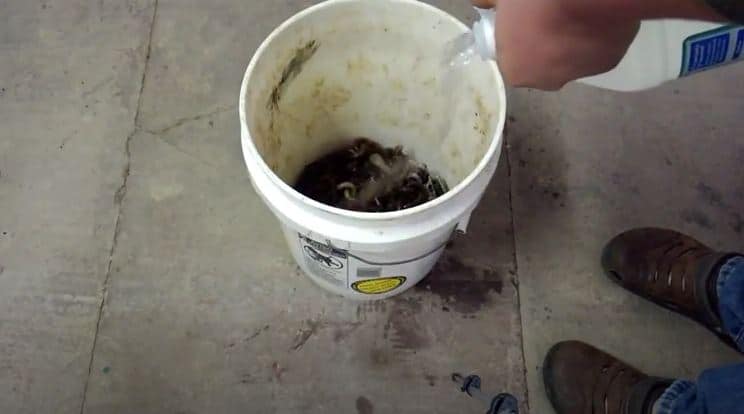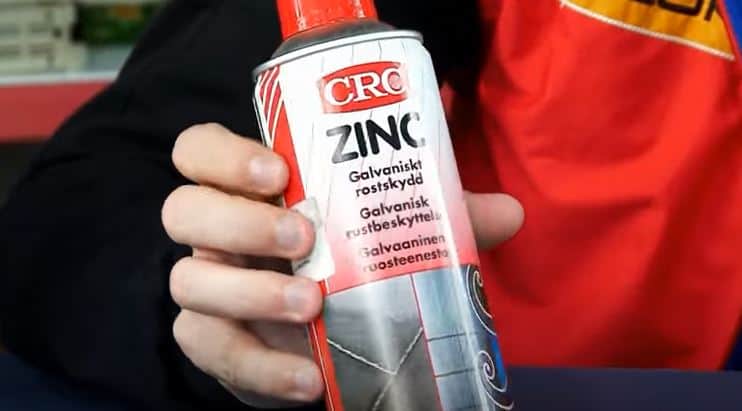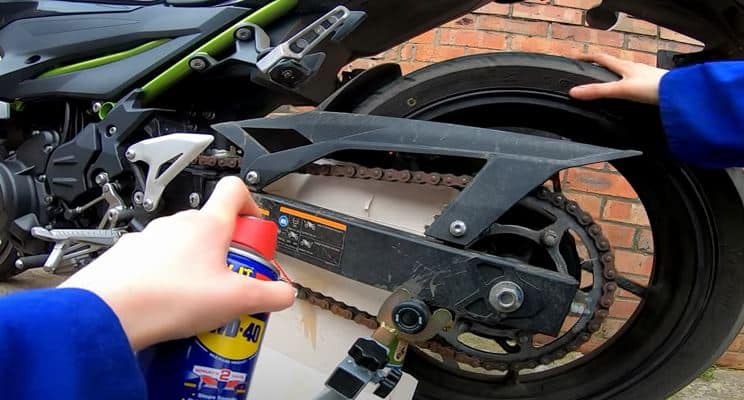How to Clean Rusty Anchor Chain
Cleaning the rusty anchor chain can be a challenge for many boat users. Moreover, not being aware of the cleaning methods might make the job more time-consuming. So, how to clean rusty anchor chain on your boat?
Using surface cleaner spray, undercoat spraying with zinc, and even WD-40 spray can be the most effective ways to remove the rust from your anchor chain. However, you can also use lubricating oil to keep these anchor chains more flexible, durable, and anti-rusting to prevent these rusts.
Here, you’ll learn more about these problems and get the most authentic and effective solutions.
What Do You Soak Rusty Chains In?

Removing rust off of a surface is difficult. More so when it is on a metal surface. The elbow grease that it takes to remove rust can also remove the galvanizing coating left on the metal chain.
The easiest way to remove rust from the chain without causing any harm is to soak it in a strong acid overnight and let it rest. Using a combination of white vinegar and 5% acid should be enough if you let the rusty chains soak in it overnight and then begin to scrub everything down.
In more severe cases of rusting, you can use Muriatic Acid. Bear in mind that when you use strong acids like these, there is a chance that they will damage or eat away the upper layers along with the metal itself.
Strong acids such as these end up removing or dissolving through the finishing coat and the paint and, in some cases, eat away at the metal itself. Therefore, it is not always recommended to use these strong acids.
How Do You Restore A Rusted Anchor?
“The only way these chains get a total makeover is during drydock operation where it’s taken out from the ship, inspected, de-rusted, repainted, and all its markings refreshed,” a Quora user named Greur answered.
If the anchor is in good enough shape, one easy way is to spray it down with zinc spray. It will effectively prevent flaking off of the anchors or chains. There are several effective ways to restore an anchor.
Everyone has their methods of cleaning or spraying solutions to clean the rusted anchors. So, below, our experts suggested some of the best ways of cleaning a rusted anchor.
Using Surface Cleaner Spray

Another effective way to restore a rusted anchor is to start by cleaning it with a surface cleaner spray. It is a safe, effective, and easy-to-use spray that will remove the unwanted upper layers of dust, dirt, and grime without interfering with the other elements.
Once you have thoroughly cleaned everything down, you need to prime the surface to protect and delay the rusting from reappearing any time soon again. After being exposed to the elements in the water and the air for a while, the surface of the anchor is rough.
Undercoat Spraying with Zinc

This can be used to smoothen everything out. Since zinc is a robust metallic bonding spray, it reduces the chances of flaking away and prevents corrosion, thus preventing rust.
After the undercoat spray, it is best to leave it untouched for a week. Lastly, spray it down with the same spray you used for the undercoating. The zinc spray is now used for the top layer to seal in all the work put into making it look good as new.
How Do You Remove Rust from A Metal Chain?

The easiest way to get the rust off a metal chain is by spraying it down with WD-40. Begin with scraping out whatever dirt you can from the chain. Then spray WD-40 all over the chain and allow it to sit for 10 minutes or more, depending on the condition of your chain and the rust on it.
Use WD-40
Allow the WD-40 spray to sit on the chains for as long as you need with as much as you need. Let the spray sit until you see the rust bubbling and fizzing away. Let the bubbles sit again for about 10 minutes before you go in with a wire brush and brush away as much as you can.
Depending on the condition of the rust, go in with as much or as less of the spray you need for the rust on your chains. Use a damp clean rag to wipe it all off and repeat until you achieve the desired result or until you see the rust fading away from your chains.
How Do You Clean A Galvanized Anchor Chain?

“You can clean galvanized metal with mild alkaline chemicals. Caustic soda should not be in excess or almost negligible. Sodium metasilicate, tri-sodium polyphosphate, soda ash, and sodium bicarbonate can be used. Nonionic surfactant with ethylene oxide – 8 are good .” Says Nasrullah Khan, a Quora user, in an answer.
Cleaning a galvanized anchor chain is easy when done correctly. Since the chains have been exposed to air and water, they can accumulate marine growth. The easier way to sort this issue is by using a combination of mixtures to clean, prime, and protect the work you put into cleaning the chain.
Cleaning Away the Rust While Protecting the Galvanized Coating
Begin by soaking the chain in a ¼ cup of dish soap in a gallon of water. Scrub down the chain with a soft but stiff brush in a specific motion while applying pressure. Rinse everything down with warm water to see if there was any improvement.
To clean off hard water, use equal parts white distilled vinegar with water and scrub in a circular motion with a clean and damp cloth and then wipe everything away with a new dry cloth.
Lastly, use one part of baby powder to two parts of milk and use a toothbrush to apply on the metal surface. Rinse everything off, dry everything to see the progress, and repeat until you achieve your desired result.
How Do You Clean A Boat Anchor Chain?
Rust appears when the metal has lost its galvanized coating. Most companies have discontinued working with chains because they tend to fail during the hot-dip process. You can get your chain re-galvanized by a company that still provides this service.
Delaying the Rust from Coming Back
The best way to keep your chain rust-free is by rinsing it down in freshwater. It would be best if you rinsed the chains as frequently as possible with fresh water and then let them air dry for as long as possible. Rust will reappear if you store the anchors while still wet or have leftover products.
How Do You Maintain An Anchor Chain?
Each link of the anchor and the chains need to be inspected thoroughly. The inspection is to ensure everything is safe and secured and all the moving parts are smoothly functioning. They need to be well lubricated and functioning to prevent falling and breaking off.
Caring for the Anchor and the Chain
Place everything out in the open for easy inspection of the link and the anchor. Disassemble everything before letting them dry out. Lubricate all the chain’s moving parts with the appropriate grease needed for the chain.
Check the anchor and the links for any wear and tears accumulated over the time it has been in the water. Keeping all the parts nice and dry before storing them back in will ensure the longevity of the chains.
Store the Anchors and Chain
The best way to store the anchors and the chain is by keeping them in a bucket with drainage holes and a smaller bucket riveted down.
Place the anchor and the rode in the same place but apart from each other to prevent staining from being in contact.
Storing the anchor, the chain, and the rode this way should serve you for years to come while keeping everything nice and clean.
The most important thing to keep in mind with this process of storing is to make sure everything is nice and completely dry to avoid any corrosion or rusting again.
Bottom Line
It is vital to inspect and look after the anchor and bow before taking the boat out for a ride. The anchor and its chains play the most integral part in slowing the boat down or halt entirely.
In case one of the links in the chain is faulty, it could potentially put you and the boat itself in danger as the anchor could either completely break off of the chain or not do the job at all.
Therefore, taking excellent care of both the anchor and the bows is very important and requires full attention to detail as frequently as possible.
Resources

